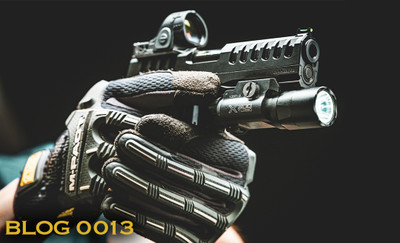


.
.
Developing muscle memory for tactical reloads is essential for any concealed carrier or self-defense practitioner. Ideally, we want to rely on muscle memory when performing a tactical reload in a defensive gun use, and to do that, we need to practice. Under stress, fine motor skills can deteriorate, making it challenging to execute precise actions. By regularly practicing tactical reloads, shooters can build confidence and develop the necessary muscle memory to perform efficiently under pressure. Here are a few key drills to build muscle memory, ensuring a readiness to act quickly and effectively.
The first drill is easiest and doesn’t require any live ammunition, making it ideal for practicing at home. The basic dry reload drill helps build the fundamental movements of a tactical reload without the added stress of live fire. Whenever handling firearms, always follow all safety procedures. To setup for this drill, unload the firearm and two magazines. The procedure starts by loading an empty magazine into the firearm and pointing it a simulated target. Begin by moving to a low ready, putting the firearm on safe and moving the index finger straight. Eject the magazine and stow it in a pocket. Reach for the second magazine and firmly load it into the magazine well. During the magazine exchange, stay focused on the target, building muscle memory to perform without looking at the firearm. Repeat and practice this drill for several minutes, focusing on smooth, controlled movements. Aim to move slow and precisely, minimizing unnecessary motion.
The timed reload drill adds a time constraint to encourage efficiency. Start slowly and gradually increase the speed as the movements become more comfortable. Load a magazine with one dummy round and insert it into the firearm. Place a spare magazine loaded with dummy rounds in a magazine pouch. Begin from a low-ready position. On the signal from a timer follow the reload procedures from above. Complete the reload before time expires. Begin with a 10-second par time, then gradually reduce the time. The goal is to complete the reload as quickly as possible without making any mistakes. Focus on speed and efficiency while maintaining a smooth, controlled reload.
Adding movement to the tactical reloads helps simulate real-life situations, training to reload while staying mobile and avoiding a static position. The setup is the same as the timed reload drill above. The procedure begins from the low ready. On the signal side step while performing the reload. Complete the reload without stopping the movement. While moving, focus on the surroundings, visualizing moving to cover and potential threats in a real-world encounter. Repeat this drill with different movement patterns to build adaptability.
Building muscle memory for tactical reloads is crucial for performing efficiently under stress. By incorporating these drills into a training routine, speed, precision, and confidence are instinctively developed. With consistent practice, these movements become second nature, allowing focus to stay on the threat. Remember to prioritize safety, maintain situational awareness, and focus on controlled movements.